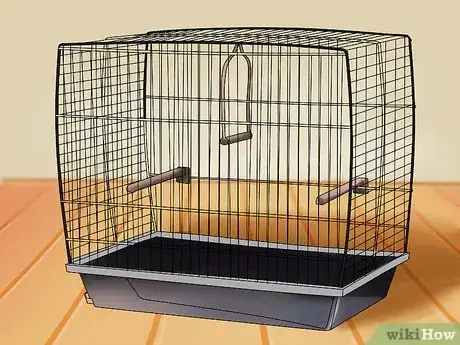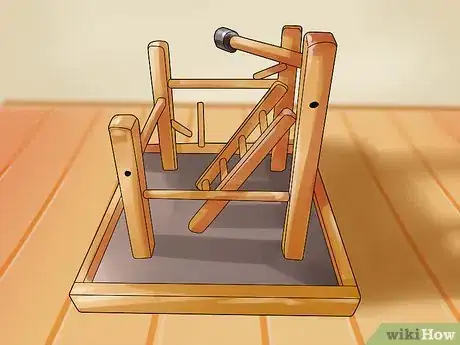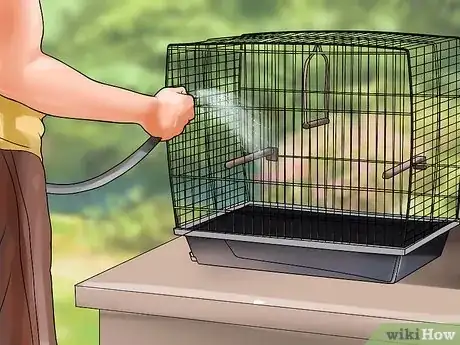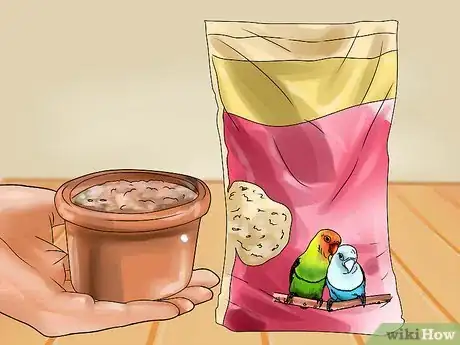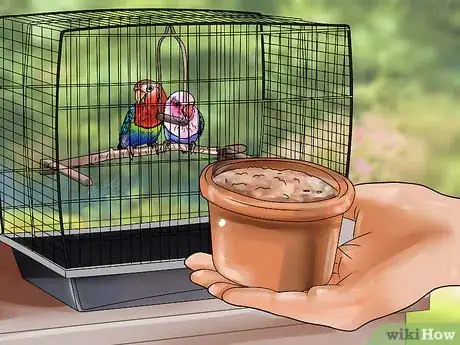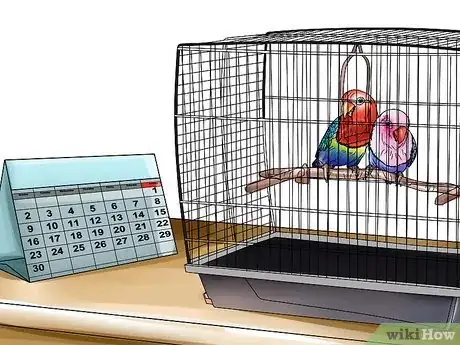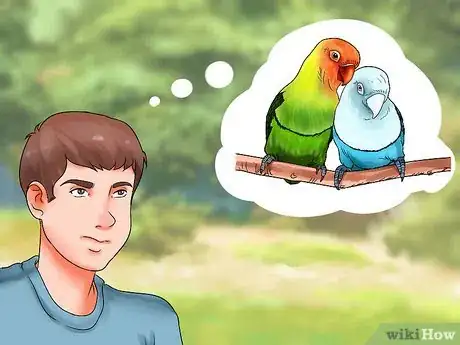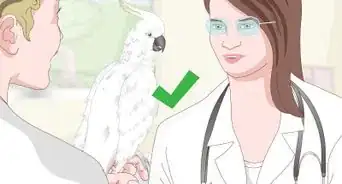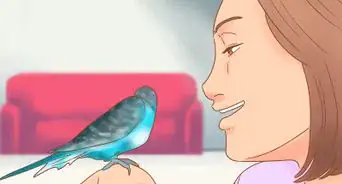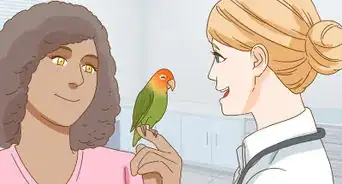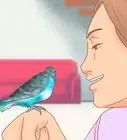wikiHow is a “wiki,” similar to Wikipedia, which means that many of our articles are co-written by multiple authors. To create this article, 34 people, some anonymous, worked to edit and improve it over time.
wikiHow marks an article as reader-approved once it receives enough positive feedback. This article received 24 testimonials and 93% of readers who voted found it helpful, earning it our reader-approved status.
This article has been viewed 514,827 times.
Learn more...
Attractive and loving, lovebirds make great pets. You'll never be bored around these creatures, with their chirping skills and their wonderfully bubbly personality. These pets are preferred over many others because of their small size and easy maintenance. They also tend to be healthier than other birds. Here's how to care for them.
Steps
Habitat
-
1
-
2Include plenty of toys, for enrichment. Switch the toys every three or four days (use them in a rotation).[2]
- Ladders and swings are favorites as well as bamboo rings.
- Always make sure that any toys you add are especially made for birds, as many things are toxic to birds. Take note that lovebirds love to chew!
Advertisement -
3Keep the cage clean at all times. Clean it at least once a week. Change the water daily.
Feeding
-
1
-
2Give nutritious foods. To stay healthy, for every meal, a lovebird needs something nutritional. Give it fresh food treats three to four times a week. Lovebirds enjoy fruits and vegetables such as apples, carrots, broccoli, cabbage, spinach, banana, papaya and melons. Wholegrain breads are okay, but avoid anything containing high levels of fat, salt and sugar.[4]
- Always get rid of any uneaten food from the cage, within 12 hours.
Should You Get a Lovebird?
-
1Ask yourself these questions before getting a lovebird:[5]
- Do I have a safe space to keep this lovebird?
- Do I understand that I am able to provide a home for him at all times? Lovebirds can live for 10 to 20 years.
- Am I financially able to provide for this bird? Fortunately, lovebirds have modest related costs but you will still need to budget for the additional requirements, such as housing and seed.
- Do I have enough time to focus on playing, singing, and talking to this bird?
- Will the noise of this lovebird be bothersome to my family or neighbors? Most families adjust with ease to having a lovebird around. They are not difficult to live with.
- Who will take care of this bird while it lives in our household?
-
2If you have answered yes, or know the answer to these questions, you are ready to choose a lovebird. Find a reliable breeder or pet store. Check the health guarantee when you purchase your lovebird, in case an illness occurs.
Community Q&A
-
QuestionDo you feed them at night time or every three hours?
 Community AnswerThey sometimes feel hungry during the night and might wake up to eat. It is usually best for them to have a feeder so they can eat whenever they are hungry.
Community AnswerThey sometimes feel hungry during the night and might wake up to eat. It is usually best for them to have a feeder so they can eat whenever they are hungry. -
QuestionHow do I get the lovebirds to fall asleep?
 Community AnswerCover the cage so they feel safe enough to sleep.
Community AnswerCover the cage so they feel safe enough to sleep. -
QuestionIs it necessary to have two?
 Community AnswerNo, but if you're not going to be home a lot, it's the compassionate thing to do to have a companion for your bird.
Community AnswerNo, but if you're not going to be home a lot, it's the compassionate thing to do to have a companion for your bird.
Warnings
- Lovebirds are very small so make sure you know where they are if they are on the floor or couch watch where you walk or sit also lovebirds on the floor become toe biters.⧼thumbs_response⧽
- Lovebirds 'love' to bite. Careful!⧼thumbs_response⧽
- Make sure you do not use Teflon pans in the house. Teflon fumes kill lovebirds.⧼thumbs_response⧽
References
About This Article
To care for a lovebird, make sure you get a large cage with plenty of space for it to move around and play. Keep a few toys, like ladders, swings, and bamboo rings, in the cage to keep your bird entertained. Remember to clean its cage once a week to keep it fresh and hygienic. You should also change its water daily to keep it clean. In terms of diet, feed it a seed mix that’s recommended for lovebirds. 3 or 4 times a week, give it fruits and vegetables, like apples, carrots, broccoli, and banana, which contain extra nutrients they need. For more tips, including how to decide if a lovebird is right for you, read on!
